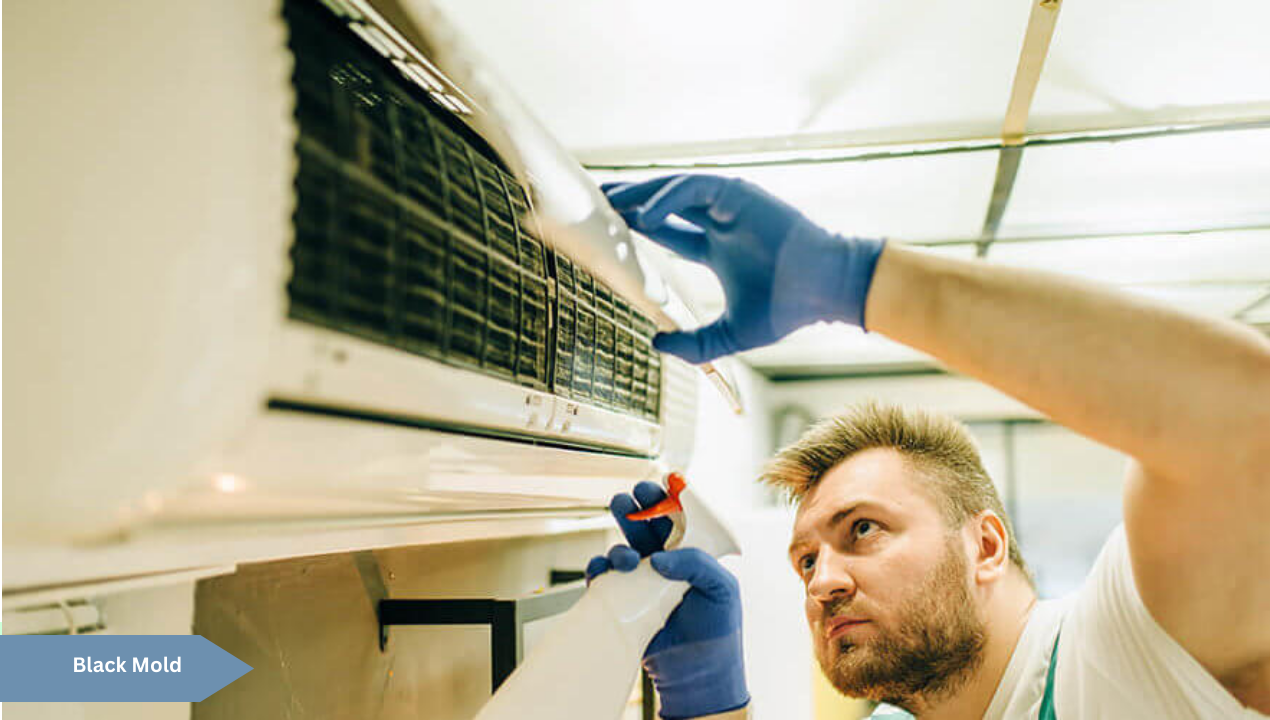Air conditioning units, by design, create a perfect breeding ground for mold. The combination of moisture from condensation and dust accumulation provides an ideal environment for mold spores to settle and grow. Here’s how it typically happens:
- Moisture Buildup: Water from condensation collects inside the unit.
- Dust and Debris: Dust serves as a food source for mold.
- Poor Ventilation: Lack of airflow prevents moisture from drying out.
Health Implications
Black mold can lead to a variety of health issues, particularly for those with allergies, asthma, or compromised immune systems. Symptoms might include:
- Respiratory issues
- Headaches
- Fatigue
- Eye irritation
In severe cases, prolonged exposure can lead to more serious health problems, emphasizing the importance of addressing mold issues promptly.
Detecting Black Mold
How can you tell if black mold is present in your AC unit? Here are some signs:
- Musty Odor: A persistent, unpleasant smell when the AC is running.
- Visible Mold: Black or dark green patches around vents or inside the unit.
- Allergy Symptoms: Increased sneezing, coughing, or irritation when the AC is on.
What Can You Do About It?
If you suspect black mold, it’s crucial to take action. Here are some steps you can follow:
- Turn Off the AC: Prevent further spread by turning off your unit.
- Inspect and Clean: Check the unit for visible mold and clean with a solution of water and detergent or a commercial mold remover.
- Replace Filters: Regularly change air filters to prevent dust accumulation.
- Improve Ventilation: Ensure proper airflow to reduce moisture.
- Professional Help: For extensive mold growth, hiring a professional may be necessary.
Prevention Tips
- Regular Maintenance: Schedule routine checks and cleanings for your AC unit.
- Dehumidify: Use a dehumidifier in damp areas to reduce moisture.
- Monitor Humidity Levels: Keep indoor humidity below 60% to deter mold growth.
Conclusion
Black mold in your AC unit is not just a nuisance but a potential health hazard. By understanding the signs and taking proactive measures, you can protect your home and well-being. Remember, when it comes to mold, prevention and early intervention are key.
Is your AC unit friend or foe? Only a thorough inspection can tell. Stay vigilant and breathe easy!
FAQs
1. What causes black mold to grow in AC units?
Black mold grows in AC units due to moisture buildup, dust accumulation, and poor ventilation, which create an ideal environment for mold spores to thrive.
2. How can I tell if there is black mold in my AC unit?
Look for a musty odor, visible mold patches around vents, and increased allergy symptoms when the AC is running.
3. Is black mold dangerous?
Yes, black mold can cause respiratory issues, headaches, and irritation, especially for those with allergies or asthma. Prolonged exposure can lead to more serious health problems.
4. How can I remove black mold from my AC unit?
Turn off the unit, clean visible mold with a detergent solution, replace filters, and ensure proper ventilation. Consider hiring a professional for extensive mold growth.
5. How can I prevent black mold in my AC unit?
Regular maintenance, using a dehumidifier, and keeping indoor humidity below 60% can help prevent mold growth.
6. When should I call a professional to deal with mold in my AC unit?
If the mold growth is extensive or persists despite cleaning efforts, it’s best to consult a professional for thorough removal.
7. Can black mold in the AC unit affect my entire home?
Yes, mold spores can spread through the ventilation system, affecting indoor air quality throughout your home.
8. How often should I check my AC unit for mold?
Regular inspections every few months, especially during humid seasons, can help detect mold early and prevent buildup.
